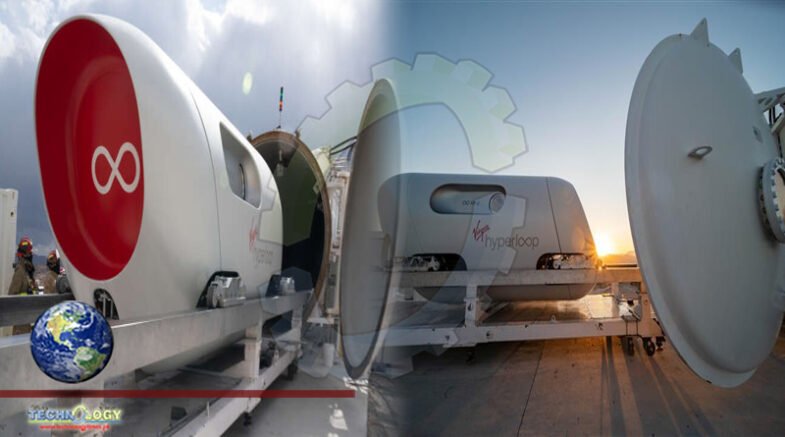Virgin Hyperloop has just completed the first-ever crewed test of hyperloop technology on their 500-meter (1,640-foot) test track.

By Jack Dunhill
Virgin Hyperloop has just completed the first-ever crewed test of hyperloop technology on their 500-meter (1,640-foot) test track, proving the technology is safe and (according to the volunteers) quite comfortable too. The two company employees were strapped into a pod, levitated above the magnetic rails, and accelerated to 172 kilometers (107 miles) per hour in 6.25 seconds as they shot through the tunnel test system.
“I had the true pleasure of seeing history made before my very eyes – to witness the first new mode of mass transportation in over 100 years come to life,” said Sultan Ahmed Bin Sulayem, chairman of Virgin Hyperloop and group chairman and CEO of DP World, in a statement.
Hyperloop is a proposed train-like system of rapid transport, in which a pod travels through a vacuum-sealed tube at extremely high speeds, cutting journey time and increasing energy efficiency by removing air resistance. Based on the world’s fastest magnetic levitation (maglev) trains, the pod uses extremely powerful magnets to levitate above the rails before being propelled along the track at speeds of up to 1,223 km/h (760 mph). Despite almost reaching the speed of sound, the hyperloop pod would travel almost completely silently, making it both fast and comfortable.
The test involved using a XP-2 pod, a newly-unveiled vehicle produced by Bjarke Ingels Group and Kilo Design, to demonstrate that the latest iterations of hyperloop technology are safe for the passengers.
“I can’t tell you how often I get asked ‘is hyperloop safe?,’” said Jay Walder, CEO of Virgin Hyperloop. “With today’s passenger testing, we have successfully answered this question, demonstrating that not only can Virgin Hyperloop safely put a person in a pod in a vacuum environment, but that the company has a thoughtful approach to safety which has been validated by an independent third party.”
Strapped into the pod were two brave volunteers – Josh Giegel, co-founder of Virgin Hyperloop, and Sara Luchian, Virgin Hyperloop’s director of passenger experience. You might think that accelerating to above 100 mph in around 6 seconds would be uncomfortable, but according to Geigel when speaking to the New York Times, the transport was “not much different to accelerating in a sports car”.
First proposed by Elon Musk, the original hyperloop was to extend from Los Angeles to San Francisco, cutting the train journey time from 12 hours to just 1 hour. Long-distance hyperloops could allow for rapid transport between large cities extremely easily and even be used in the transportation of goods between businesses.
However, hyperloops have drawn criticism from many scientists for not being economically viable. Creating vacuum-sealed tubes capable of levitating pods over long distances is extremely expensive, and any warping of the sealed tube could result in catastrophic buckling.
Demonstrating safety and comfort passes a massive milestone in hyperloop technology and with more test tracks being built, the future of rapid transport looks promising. However, it will likely be many more years before hyperloops become economically viable enough to be used across extremely long distances, so your car may have to do for now.
Originally published at iflscience
